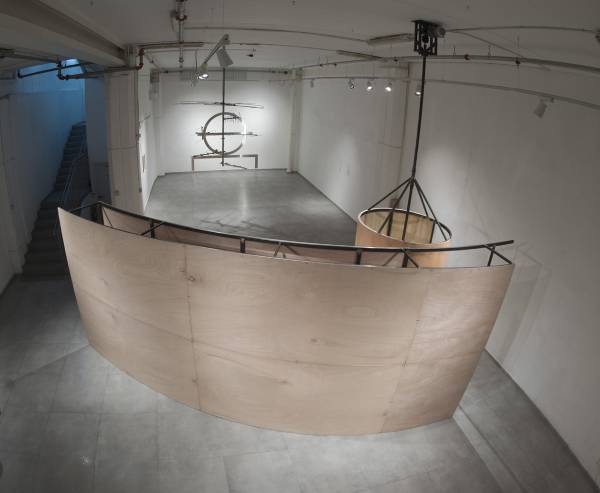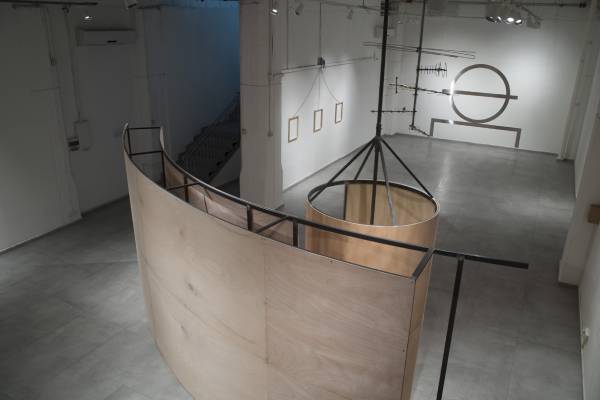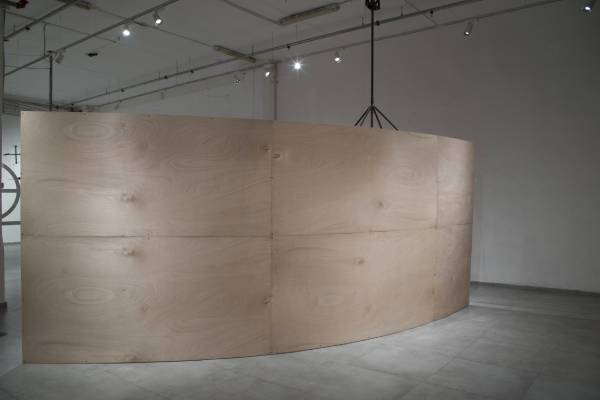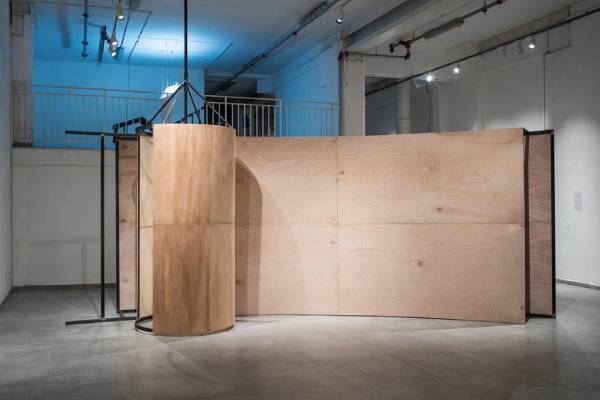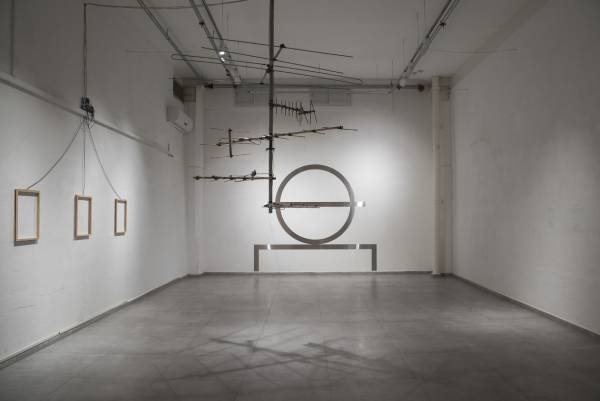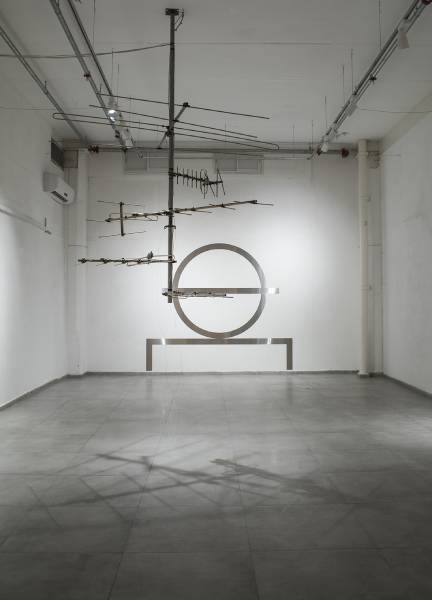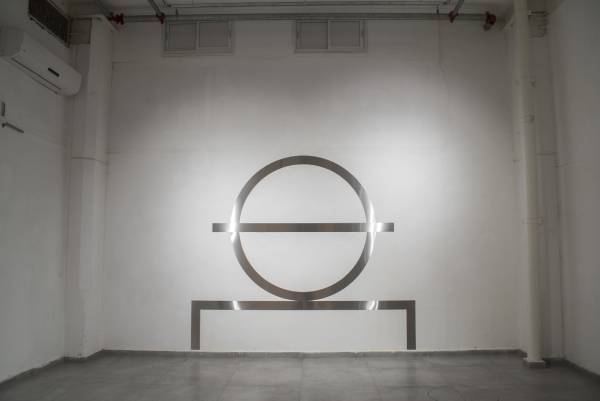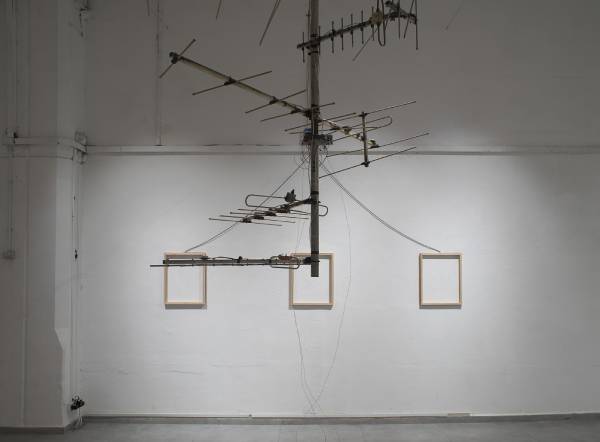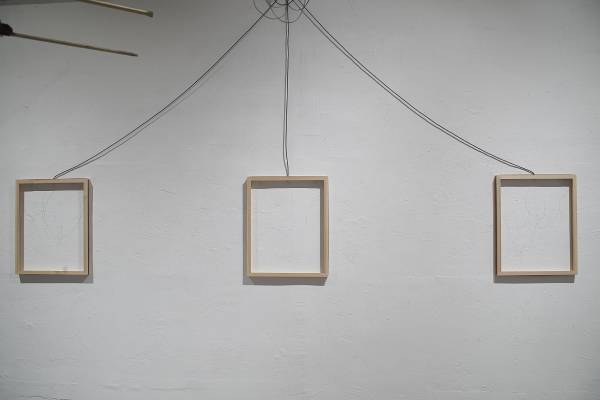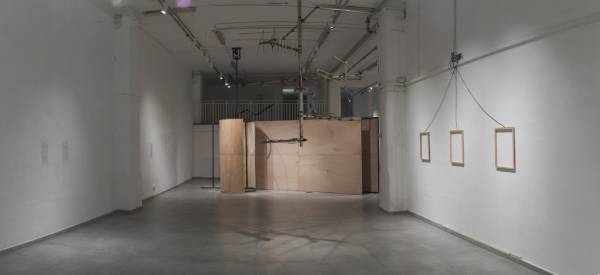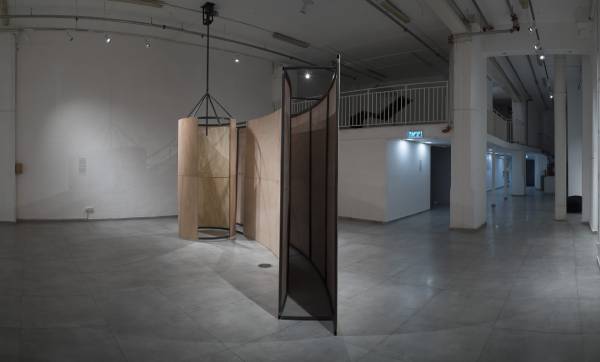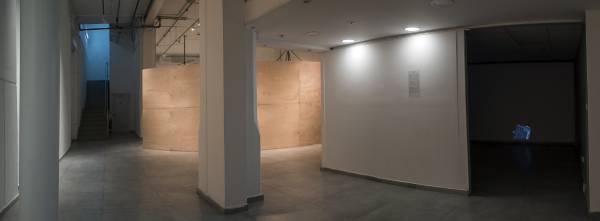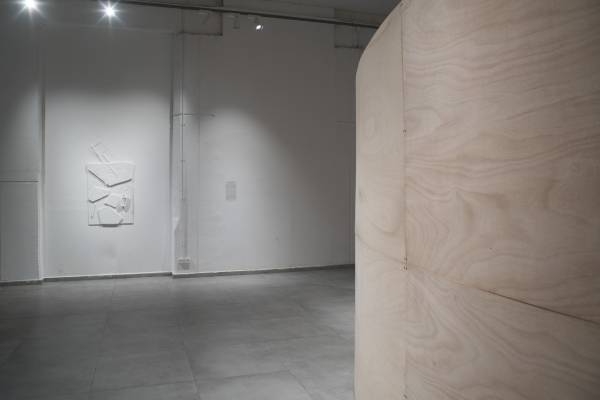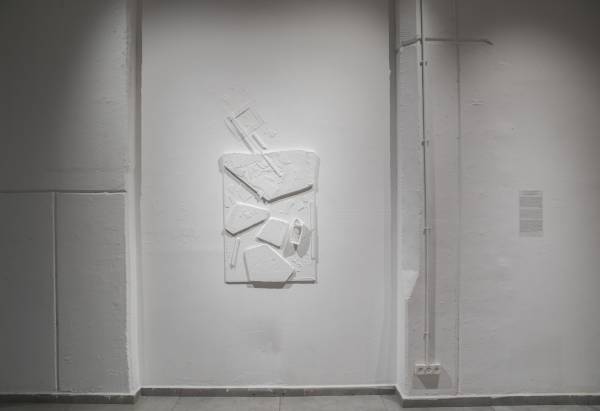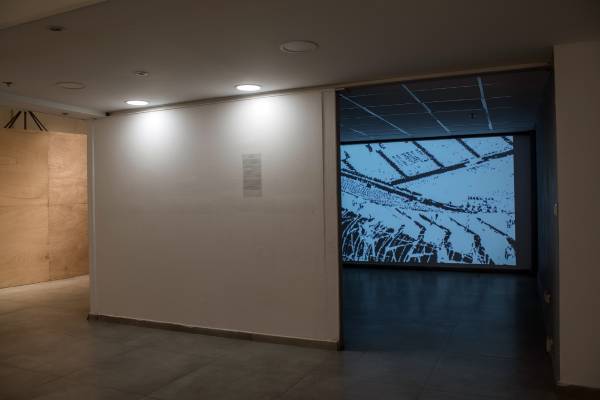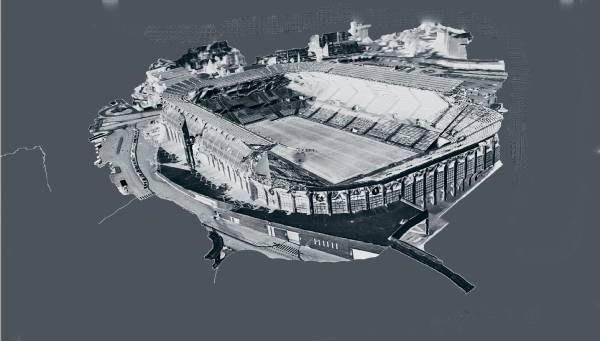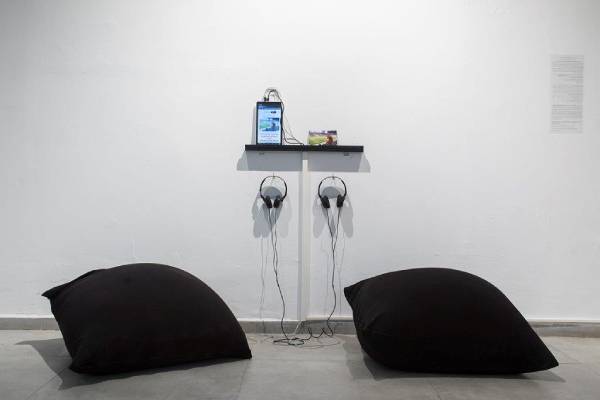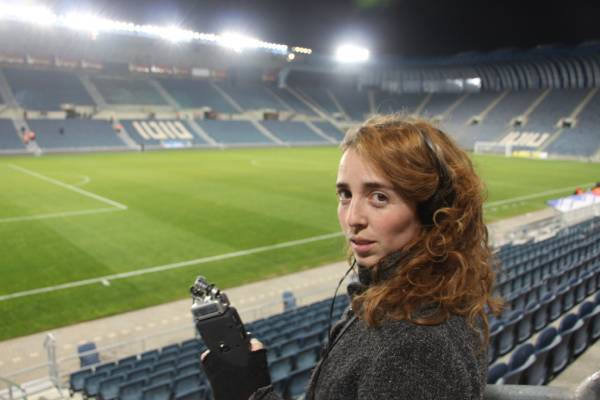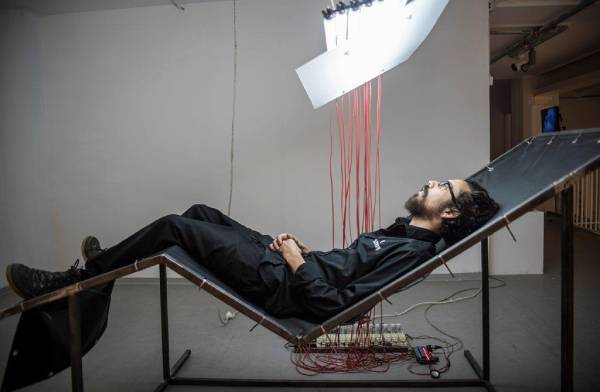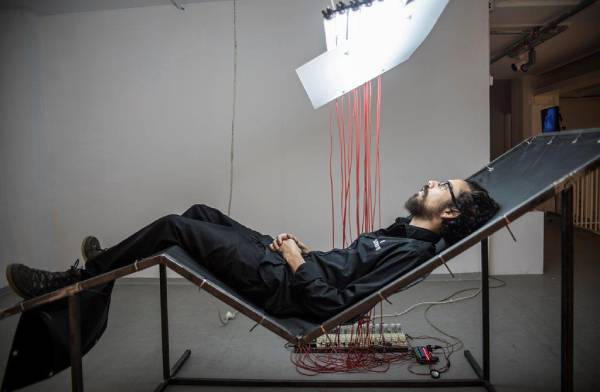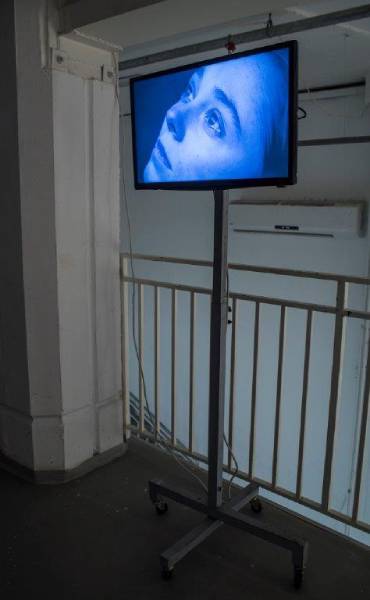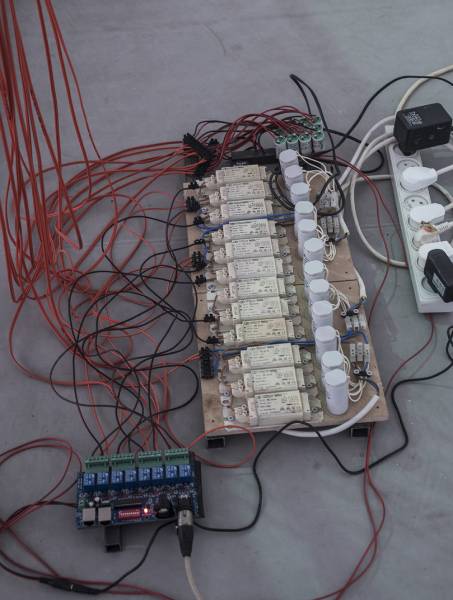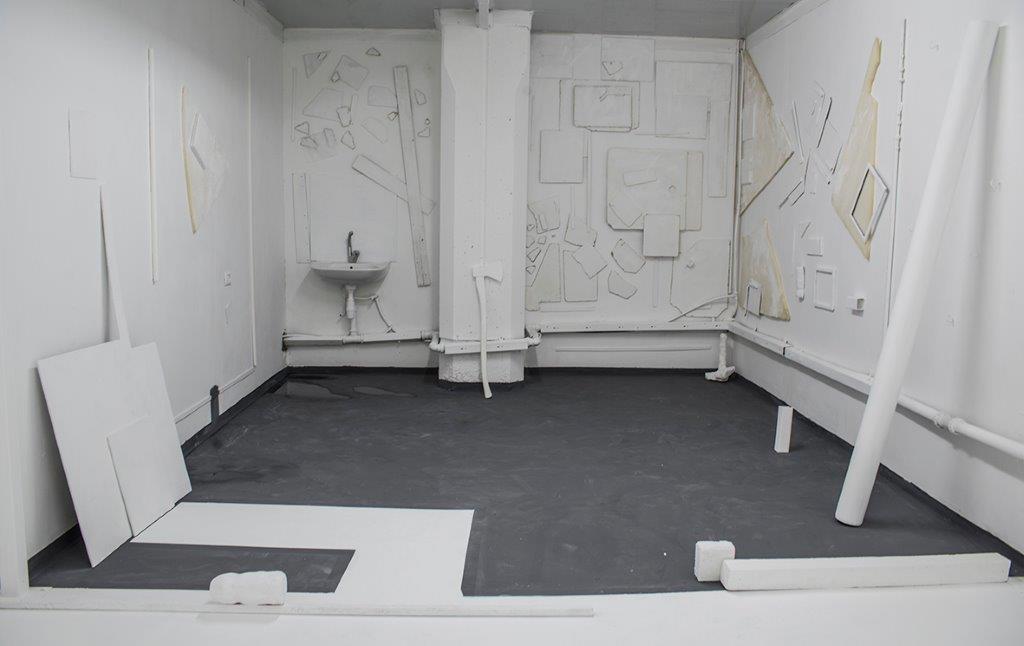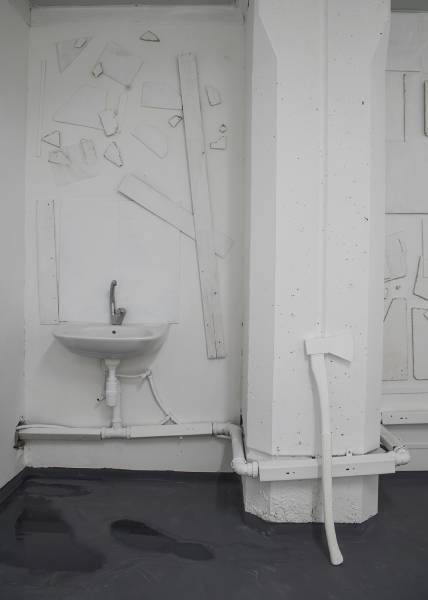Bikurim 2
Eyal Bitton / Niv Gafni / Nurit Dreamer / Noga Haberman / Dana Tannhuaser / Hanna Qubty / Anat Keinan
January 17 – February 29, 2020
The New Gallery Teddy, Jerusalem
Bikurim, in its second edition, is a bi-annual project aiming to encourage the activity of young artists in Jerusalem. Unique among its kind in Israel, the project is supported by The New Gallery Teddy and the Jerusalem Municipality Art Department, and features work by eight art school graduates living and working in Jerusalem, whose lives are essentially tied to the city.
The intent and purpose of the exhibition is to constitute a professional platform and provide exposure to these young artists. However, it is nearly impossible to disregard the recurring themes that emerge from the works, be it by chance, or perhaps as a result of the “spirit of the times’ and life in Jerusalem. Drawing from "the site” and its relation to its viewers, each work, in its own way, seeks to leave a physical or suggestive impression on the viewer.
Several of the works on display refer to the gallery’s physical structure, while others focus on Teddy Stadium right above the gallery. Despite the essential differences between the two spaces, both gallery and stadium play an active role in the fabric of life in Jerusalem, functioning, respectively, as monumental sites that allow for the congregation of a large audience, conducting ceremonies, and to which residents arrive with anticipation, among other things, to experience a deeply emotional, ecstatic experience.
Additional works question the space-object-human relation by employing inherently different aesthetic and artistic means. The works in question actively manipulate - in a direct and indirect manner - the visitor, who, in order to fully experience the work, is required to participate in various ways such as walking, turning, leaning, listening, and touching. The visitor therefore becomes a necessary condition for the realization of the exhibited works, a kind of conductor or generator. The works need the viewer to give them life.
Either way, control and absence, exertion of power, subjection to predetermined conditions, compliance with codes and conventions, and ceremonies and body regimes are all present in the works themselves in a multitude of modes and intensity. Some carry a kind of strained atmosphere; suspense, lack of knowledge and fear of the next moment.
Noga Haberman, Industrial Speleology, Industrial materials, 2020
In Noga Haberman's work, which takes place inside her studio, the artist engages in dialogue with the notion of ‘site’, a concept from which she draws inspiration and to which her work responds. Walls, floor, architectural elements, and the space itself are all constructed into her work and used as a platform, while she employs painting and sculptural practices embedded in the aesthetic language of the structure, and which disrupt its order. Haberman maintains, and emphasizes, the studio’s rugged nature: plastic pipes, raceways, and structural parts (characteristic of industrial buildings) remain exposed and visible, integrated into the installation until it is nearly impossible to determine whether they belong to the work, the space, or both. The objects and assemblages, originally industrial and urban waste, concrete, plywood, and found objects, are unified by color, whether coated in plaster or painted a milky shade of white. From an intuitive, playful work process, where like a chain reaction every action influences the next, comes a parallel 'place’, at once both alien and familiar, like a playground for a collective subconscious, or an inescapable limbo.
Nurit Dreamer, Intimately at Teddy Stadium with Nurit Dreamer, Sound, 2020
In Intimately at Teddy with Nurit Dreamer, the artist invites interviewees to join her in the stadium for a personal conversation during the course of a soccer game. The work borrows from two forms of interviews from the entertainment business; 1990s talk shows and contemporary podcasts. At the stadium, Dreamer unravels the strict rules according to which talk shows are normally conducted, and instead makes it her studio. The solid format becomes a surprising, unexpected and sometimes wild performance. Individual guests are invited in advance for each interview, while during the session, Dreamer expands the circle and randomly invites more people present at Teddy Stadium. She moves with much fluidity between the private and public spheres, and produces a multicultural and multi-age discourse in the midst of a passionate event. Each interview is recorded and uploaded as a podcast. The sequence of interviews form a fascinating human mosaic that allows for a glimpse into the epidermis of Israeli society.
The program will run parallel to and throughout the duration of the exhibition, on game days. Being a guest in Dreamer’s program requires signing up in advance by sending an email to podcasttedy@gmail.com. Following which further details will be provided. The podcast series will be available on The New Gallery Teddy’s website. The work was made possible by the generous support Teddy Stadium. Special thanks to Ran Tubul
Anat Keinan, Next time I kill you, I promise you the labyrinth made of the single straight line which is invisible and everlasting, Iron, wood, engine, 2020
Anat Keinan's work is a minimalist sculptural structure that redefines the gallery space and delineates a walking path within it. Contours of urban architecture undergo decomposition and abstraction and are embodied in the questionable form of foreign or domestic objects. The familiar space changes in the face of a five-meter-long curved monumental wall, drawing the viewer in, to get lost inside the long, winding corridor. On the outside of this corridor is an endlessly rotating cylinder. The two objects are adjacent to each other and it is almost as if they wish to be linked at their meeting point. The enigmatic structure conjures up American minimalist-monumental sculpture in the 1980s and 1990s. Keinan seeks to examine the interplay between the human body, the sculptural object, and the space in which it is placed, drawing inspiration from literary texts describing situations of stress, helplessness, and danger in a confined space. Despite its vast dimensions, the material sparseness (plywood and iron) adorns the work with a sense of a drawing in space, with nearly no volume, and emphasizes the doubt concerning the piece’s stability. A view from the top floor of the gallery illustrates the 'endless invisible straight line'.
Eyal Bitton, Clarity, Fluorescent lights, electronics, iron, fabric and sound, 2020
Clarity is an installation for one person, wherein the viewer plays an active role. In the space are a single bed, a screen of fluorescent lights, and a pair of speakers. The viewer is asked to lean on a sharply tilted bed (a sort of hybrid between a surgical table, torture brace, and Zero Gravity system) look at the screen, and devote oneself to the sights and sounds they are surrounded by. From then on, he is under the influence of an abstract sequence consisting of light and sound. The sequences are managed using digital code that light and sound respond to its commands and occur in varying rhythms, at simultaneous and alternating paces. The fluorescent lighting has an irregular, chaotic mechanism (due to a chemical reaction to electricity) and disrupts the code’s accuracy, allowing for that which is human and coincidental to seep into the occurrence. The sequence aesthetic corresponds with the British Avant-garde movement Structural Film, who, in the 1960s and 1970s, aspired to simplify the cinematic medium into its most basic elements (light/darkness, sound/silence) to highlight its form over its content. The effect of the changing light and audio sequences, together with the isolation of the viewer within the work, produces an intense state seeking to lead the viewer into a hypnotic state of consciousness, and to forcibly sweep them into a suggestive reality of their own.
Niv Gafni, The Fifth Façade, Antennas, Exciters, Wood Frames, Copper Wire, Cables, 2020
Niv Gaffney's work is a song of praise for an object almost entirely extinct - a TV antenna, which in the not-so-distant past symbolized a culmination of technological progress. Still, while antennas have been replaced by satellite dishes and are no longer in use, the urban landscape remains as it was. The antennae forest, a characteristic of buildings’ 'fifth facade', became a scrap yard of rusty metal bodies. The antennae lay atop roofs as remnants, and are now at the mercy of migrating birds and weather conditions. In his work, Gaffney joins several antenna skeletons, in different states of ruination, into one unit. The multi-branched metal body hangs from the ceiling (as if punished), invading the gallery and allowing an intimate proximity to it. In this work of his, Gaffney creates a world of sounds that the human ear cannot hear. Using a speaker system connected to the metal body, he gives voice to the sounds of the electromagnetic field (the language of the antennae) and transforms the latent sounds into irregular vibrations. The visitor's presence in the exhibition together with the electrical devices they carry, breathe life into the work bringing it to life.
Dana Tannhauser, Hall, stainless steel, 2020
Hall is a site-specific installation that merges architectural and liturgical concepts of religious structures with the graphic language sports, particularly soccer and basketball. Placing this work inside an art gallery conjoins religion, sports, and art, and raises questions about the similarities among the three fields. Tannhauser creates a sort of abstract symbol from strips of stainless steel, citing familiar lines and graphic symbols from the sports field. The icon is hung on the wall at the far end of the gallery, generating a sacred focalpoint in the exhibition space. This unidentified sign, gleaming on the wall, provides the viewer with a sense of admiration and awe, as if it were a religious element. Tannhauser conjugates the architectural-colossal spaces, which differ in appearance and purpose, but resemble each other in the physical and emotional influence they may exert in the visitor. The monumentality of the work emphasizes one’s smallness and evokes a sense of exaltedness and awe. The potential for an ecstatic experience to take place in the human psyche is found in religious ceremonies, in sports fields, and as well in the gallery space. They all take place according to a detailed system instruction, guidelines, prohibitions, and signs - “rules of the game” intended to organize the human behavior of those present in them.
Hanna Qubty, Untitled, Video, 2020
Hanna Qubty's video installation presents a clever inversion. The artist, in the video, breaks through the fortified boundaries of Teddy Stadium with the help of 3D digital software provided by the Jerusalem Municipality. The stadium, regularly accessible only under strict supervision of security guards and cameras, has been infiltrated by Qubty through the use of this software and the bird’s eye view it provides (by means of technology similar to Google Earth). Thanks to the cameras, the artist is able to endlessly roam the stadium. He shoots frames, edits them in a plotless sequence, and shows how aerial photography and a bird’s eye view can (also) be used as tools for invasion, control, supervision and exercise of authority over objects.
For Qubty, who lives in the nearby Beit Safafa, the stadium is not merely a sports site, but a volatile space, and a platform for racial eruption, and is therefore a daily reminder of the complexity of life in Jerusalem. Looking at the space from above is a decolonial move. It dissolves alienation, horror, and contempt, and thus overcomes the structure by its own intrusive supervision and surveillance.

